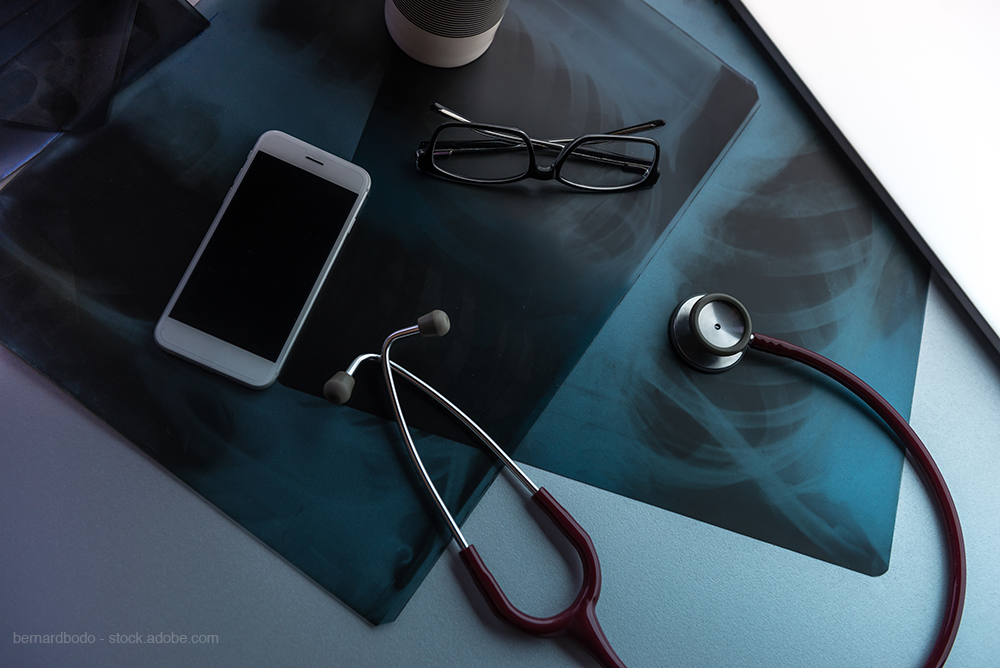Work From Home During COVID-19…If You Can
Teleradiology may already be maxxed out.

As the COVID-19 situation, and society’s respect for it, have developed, isolation-both self-imposed and mandated-has become an increasingly universal thing. Social media has been a great outlet for folks to remain connected with one another, including jesting and otherwise venting about coming to grips with new limitations on life.
Being a work-from-home teleradiologist, I was already used to living as a shut-in, at least 5 days out of every 7. It’s been even more than that in recent weeks, since I try to front-load as many of my weekend shifts as possible during early months of the year.
Seeing everyone’s posts on adapting to what is my status quo, I’m repeatedly reminded of an old expression: “In the land of the blind, the one-eyed man is king.” This isn’t quite the case here. I don’t think my friends and family are about to rally around me as a shining example of how to live for the next few weeks. Heck, if this thing stretched out for a period of months, I’m not even sure I’d be the last one to mentally crack from it. Still, I daresay my 8-plus years of living as a telerad have taught me a thing or two.
My initial inspiration for this blog entry had been that, as everyone who can work from home is being encouraged (if not forced) to do so, an awful lot of radiologists were about to get a first-hand glimpse of working via tele. (Even those who here-to-fore maintained that tele was the work of the devil.) The piece would probably have been called something like “Welcome to my world” and contained a few pointers to help folks adapt, avoid pitfalls, etc.
It, then, occurred to me that, while some rads will definitely be making this move, it’ll be far from a sweeping change. That is, I expect very few who don’t already have telerad setups in their homes to be given the option. Telerad requires a certain amount of equipment and connectivity. If you don’t have monitors with sufficient resolution, enough bandwidth with your ISP, etc., you’re, at best, going to be hobbling along, hamstrung. In some municipalities, there are actually legal/regulatory gear requirements.
Which is somewhat ironic: In the current crisis, where words like “telemedicine” and “telehealth” are making routine headlines, and just about every other specialty that doesn’t require hands-on is leveraging phones and computers for remote patient care, our specialty, which was in the vanguard of remote coverage, has little means of similarly upping its game. Most of us who can work from home, already do.
If a usually-onsite rad were to start working from home, (and didn’t already have a telerad-capable rig for covering call-shifts), he’d need to have the relevant gear shipped to him. Then, if he wasn’t particularly skilled at hooking it up-connecting all the wires properly, setting up the software-he’d need, at least, remote help if not someone onsite. Some would need an internet-connection upgrade. Finally, the rad would probably need someone to show him how to use the software and interfaces -- at least for basic functionality, if not maximum efficiency.
Each of those steps would require other folks-tech support, local ISP, etc.-to be at their posts and available to help. And, given the current situation, they’re not necessarily going to be available at all. There might be a delay of days, even weeks, due to backlogs of supplies and/or personnel.
Now, suppose there are half a dozen rads in a small group who all suddenly need the same stuff. It’s not too hard to imagine that, by the time everybody’s set up and ready to work from home, the quarantine will be over.
One way to bypass some of that would be a temporary relaxation of requirements. Maybe, to get through the crisis, it’s okay to issue prelimimary reads from monitors that aren’t quite up to resolution-snuff. And, maybe some rad groups, having more people working from home with slower Internet speeds (or less adept with remote-reading software), might set aside their usual expectations regarding productivity.
Some problems also solve themselves. As elective procedures and other non-emergent healthcare get put on hold, I’m hearing that a lot of groups are seeing imaging volumes drop. Lighter worklists can be cleared with fewer rads-maybe not everybody who’s staying home needs to be logged in.
In any event, it’s probably not going to be possible for everyone to suddenly become a teleradiologist to ride out the current situation. I’m of the opinion that anybody who can, probably should-for their own benefit as well as that of those around them.
Even for those who cannot before this thing resolves, I’d suggest that getting set up for potential from-home telerad work is a good, proactive move. Any number of future events could result in another situation where working from home would become desirable, if not the only real option. Why not have your own radiological “Panic room,” ready for whenever you need it?
The Reading Room Podcast: Emerging Trends in the Radiology Workforce
February 11th 2022Richard Duszak, MD, and Mina Makary, MD, discuss a number of issues, ranging from demographic trends and NPRPs to physician burnout and medical student recruitment, that figure to impact the radiology workforce now and in the near future.